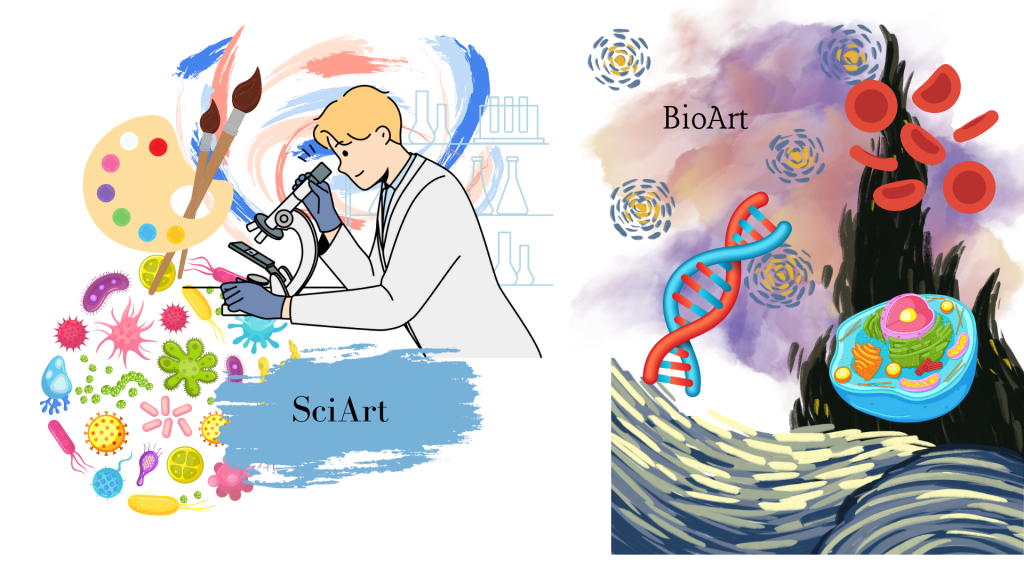In recent years, the intersection of science and art, known as SciArt, has emerged as a vibrant field that blurs the boundaries between disciplines. This fusion of creativity and scientific inquiry has given rise to groundbreaking artworks, innovative collaborations, and thought-provoking installations. In this blog post, we’ll delve into the world of SciArt, with a focus on BioArt, and explore the methodologies behind interdisciplinary collaboration.

SciArt encompasses a broad range of artistic practices that draw inspiration from scientific concepts, theories, and methodologies. Artists working in this field often use scientific data, materials, and techniques to create artworks that provoke thought, inspire wonder, and challenge our perceptions of the natural world.
BioArt specifically focuses on the intersection of biology, art, and technology. It explores themes related to genetics, biotechnology, ecology, and the human body, raising questions about bioethics, identity, and the relationship between humans and other living organisms.
Key Practitioners and Their Work
- Sir Alexander Fleming: While primarily known for his scientific achievements, such as the discovery of penicillin, Fleming’s work also inspired the field of microbial art. His groundbreaking research on antibiotics laid the foundation for artists to explore the microscopic world of bacteria and fungi through creative expression.
- Andre Geim: Awarded the Nobel Prize in Physics for his discovery of graphene, Geim is also known for his playful approach to science and art. He famously used adhesive tape to isolate graphene, showcasing the ingenuity and improvisation inherent in both scientific and artistic endeavors.
- Libby Heaney: As an artist and researcher, Heaney explores the intersection of light, technology, and perception. Her work combines elements of neuroscience, psychology, and digital media to create immersive installations that invite viewers to question their sensory experiences and the nature of reality.
Methodologies of Interdisciplinary Collaboration
Interdisciplinary collaboration lies at the heart of SciArt and BioArt, bringing together artists, scientists, engineers, and technologists to explore new possibilities and push the boundaries of creativity. Key methodologies include:
- Co-Creation: Collaborators work together from the outset, sharing ideas, expertise, and resources to develop projects that bridge disciplinary boundaries.
- Mutual Learning: Artists and scientists engage in a process of mutual learning, gaining insights and inspiration from each other’s perspectives and methodologies.
- Experimentation and Risk-Taking: Embracing experimentation and risk-taking is essential in interdisciplinary collaboration, allowing for the exploration of unconventional ideas and approaches.
Reflecting on our journey through SciArt and BioArt, I’m amazed at how science and art blend seamlessly, sparking creativity and innovation. Discovering the works of artists like Sir Alexander Fleming, Andre Geim, and Libby Heaney has been eye-opening. Their unique perspectives—from Fleming’s microscopic art to Geim’s playful experiments and Heaney’s captivating light installations—have inspired me deeply.
Learning about collaboration methods has taught me the value of openness and communication in bringing different fields together. As I look ahead, I’m eager to keep exploring SciArt and BioArt, finding my own path of discovery and expression. This journey has not only broadened my horizons but also fueled my passion for exploring the connections between science and art in my own creative endeavors.